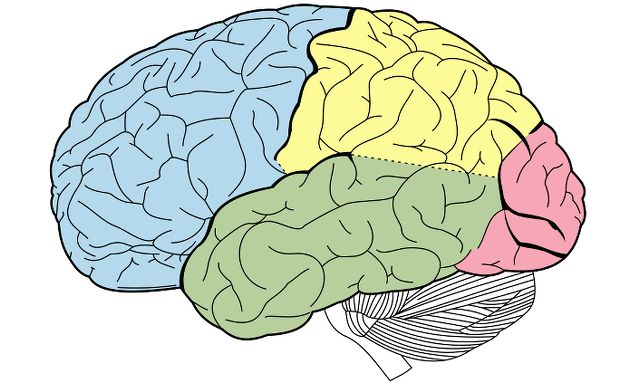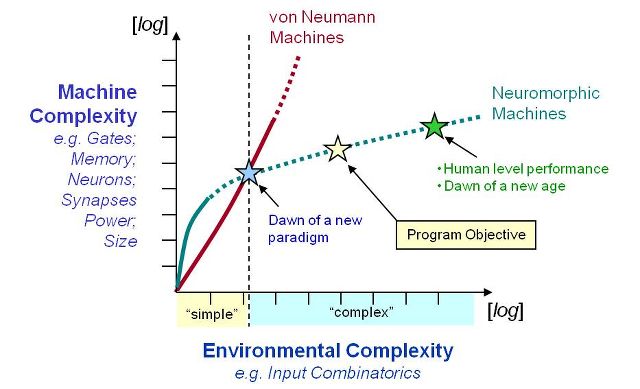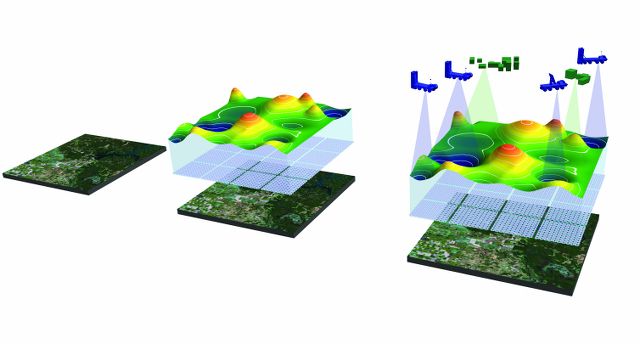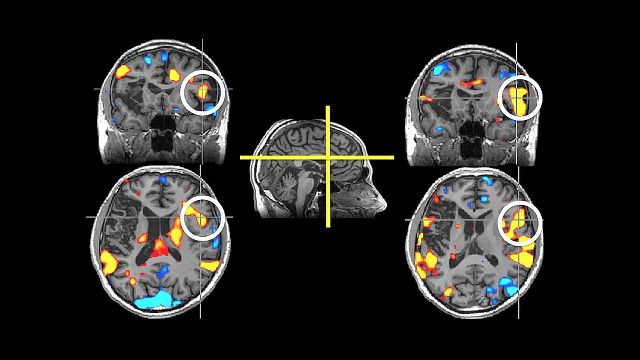Cameras that tell you what they see. Computer chips that self-destruct. A processor that mimics the human brain's neocortex. Authentication systems that analyze a user's "cognitive fingerprint." Sound like Star Trek? It's not. It's just another day at DARPA.
Defense Advanced Research Projects Agency (DARPA) is one of the most fascinating and secretive parts of the US government. The motto on the front page of the DARPA website is "Creating and Preventing Strategic Surprise," which perfectly sums up the future research that the group does. Remember the Big Dog? That large, self-balancing robotic dog was funded by DARPA? DARPA was also pretty instrumental in creating the Internet.
Simulating the Brain: SyNAPSE
One of DARPA's current projects is called "Systems of Neuromorphic Adaptive Plastic Scalable Electronics," or SyNAPSE. The idea behind the program is to create a computer that works on the same principles as the human brain. Current computer processing is extremely inflexible compared to a brain.
While machine learning has come a long way toward creating a computer that can learn independently, processors are still limited to using algorithms that are created by people.
In contrast, the brain can deal with complex and incomplete datasets, changing rules, inferential learning, and all of the other real-world things that make effective machine learning extremely difficult.
Already, DARPA has made significant progress by creating "nanometer-scale electronic synaptic components capable of adapting connection strength between two neurons in a manner analogous to that seen in biological systems," and is now seeking to work with researchers to create more advanced hardware, architecture, simulation tools, and training environments to discover what the capabilities of this sort of system are and how it could be used in the future.
This sort of computing could lead to huge increases in computing power, as the brain is an extremely efficient information processor. The system will also be highly scalable, meaning that it could potentially continue to grow in size and power.
As you can see from the image above, DARPA predicts an extreme shift in the computing landscape because of this technology.
Non-Digital Processing: UPSIDE
If you know much about computing, you'll know that computers perform calculations in binary notation — a sequence of ones and zeroes — and that's at the very core of computation. Right? Right. For the most part.
DARPA is working on creating analog computers with transistors that can be in a non-one, non-zero state, performing probabilistic computation. If it's probabilistic, there's always a chance that it will be incorrect; so why would DARPA try to make less accurate computers?
In a word, power. Although processing power has become cheap, creating batteries that run those processors is still inefficient and expensive.
Probabilistic computation uses probabilistic inference, which could potentially unlock currently impossible processing speeds and power efficiencies for video and image processing, according to a 2012 DARPA news release on Unconventional Processing of Signals for Intelligent Data Exploitation (UPSIDE).
With spy satellites and drones being heavily used around the world for military, industrial, and commercial purposes, it only makes sense that DARPA would be looking for ways to make them more efficient.
UPSIDE is using some pretty high-tech gear. According to the DARPA website, the project aims to create "arrays of physics-based devices (nanoscale oscillators may be one example)" that would adapt to inputs, meaning that they wouldn't need to be programmed in the sense of the word that we use now — they would just learn what they needed to based on the input they receive.
Self-Destructing Computers: VAPR
The Vanishing Programmable Resources (VAPR) program seeks to create electronics that can self-destruct when they receive a specific signal or experience certain environmental conditions.
The military benefit of a program like this should be obvious — every soldier on the battlefield now carries an impressive amount of extremely powerful electronics that the U.S. government doesn't want falling into enemy hands. What's the obvious solution? Self-destruction!
DARPA has already created some tiny biocompatible electronics that dissolve in water and could be used for medicinal purposes — fighting infections, for example. Dissolvable, biodegradable devices have been created that are used to prevent infections at surgical sites; they dissolve into the body and perform the same function as more typical antibiotics.
Of course, making an implantable device that dissolves in water and one that turns to dust on command are in totally different magnitudes of difficulty, but IBM was recently awarded a significant contract to find a way to do exactly that.
Behavioral Analysis: DCAPS
Detection and Computational Analysis of Psychological Signals (DCAPS) is future research that "aims to develop novel analytical tools to assess psychological status of warfighters in the hopes of improving psychological health awareness and enabling them to seek timely help."
In short, DARPA hopes that an opt-in monitoring program will be able to automatically search for the signs of PTSD or other psychological issues in soldiers after they come home from deployment.
The program will monitor text and voice communications, sleeping and eating patterns, social interactions, online behaviors, facial expressions, body posture, and body movement to develop an overall psychological health metric. It won't give specific diagnoses, but it will identify signals that could be indicative of risk for psychological trauma or health issues.
Sound scary? Fortunately, the plan is to make this a totally voluntary program, and the data will be stored in a highly secure framework; it'll also be controllable by participants, presumably allowing them to monitor and delete any of their data if they so choose.
...And a Whole Bunch of Other Cool Things
These four programs are just a tiny fraction of the work that DARPA is doing on advanced computing. They're at the forefront of natural language processing, quantum science, machine learning, and massive data analysis.
If you ever want to read about programs that will totally blow your mind, head on over to the I2O (Information Innovation Office) or MTO (Microsystems Technology Office) pages on the DARPA website and check out their projects.
A few of my personal favorites are Active Authentication, EXCALIBUR, MADCAT, and Mind's Eye. Check them out! Which DARPA projects do you find most interesting or unusual?
Image credits: DARPA, Iwan Gabovitch via Flickr, RogDel via Wikimedia Commons.






